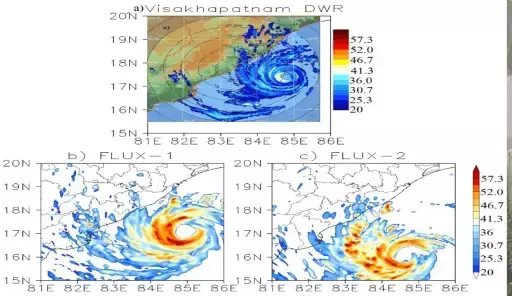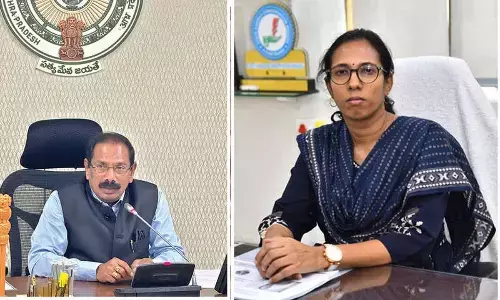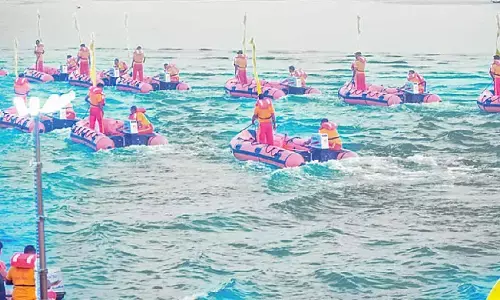Cyclone Fengal: A Case Study in Unpredictable Cyclones and Forecasting Challenges

Cyclone Fengal: A Case Study in Unpredictable Cyclones and Forecasting Challenges
Cyclone Fengal's unpredictable path highlights the challenges of cyclone forecasting, showcasing weather anomalies and difficulties in tracking and predicting storms.
Cyclone Fengal has presented a significant challenge to meteorologists, defying the usual patterns of cyclone formation and tracking. As the storm continues to affect parts of India, including north Kerala and south Karnataka, it has highlighted the cyclone tracking challenges that persist despite advances in cyclone prediction technology. The unpredictable cyclone behavior of Fengal—its extended lifespan, slow movement, and erratic path—has left experts grappling with how to better predict and track these storms.
An Unusual Cyclone: Cyclone Fengal's Extended Life
Cyclone Fengal first formed as a low-pressure system in the eastern Indian Ocean on November 14, 2024. It took 10 days to develop into a depression in the Bay of Bengal and then meandered slowly for another week before intensifying into a named cyclone. What followed was an unusual cyclone behavior: Fengal drifted westward, then sharply turned north before wobbling back westward. This erratic movement was driven by complex wind patterns and a warm, slow-moving Bay of Bengal. Unlike typical cyclones that dissipate quickly after landfall, Cyclone Fengal maintained its structure, thanks in part to soaked coastal soils providing additional energy to the storm.
This difficult to forecast cyclone has proven to be an outlier, with its extended life and unpredictable trajectory throwing off weather models that rely on certain assumptions about storm behaviour. As of December 2, Fengal remained active, and experts could not rule out the possibility of the storm surviving long enough to re-enter the Arabian Sea.
The Meteorological Challenges of Cyclone Fengal Tracking
The case of Cyclone Fengal underscores the difficulties in cyclone forecasting methods. In the context of a La Niña year, when more cyclones are typically expected, Fengal’s unusual behaviour has raised important questions. Despite the presence of favourable conditions such as warm waters, weak vertical wind shear, and ample moisture, the cyclone’s movement was slow and erratic, leading to weather prediction failures. Meteorologists faced cyclone tracking issues as the storm’s path defied forecasts and continued to linger longer than expected. These meteorological challenges are particularly pronounced in regions like the northern Indian Ocean, where cyclones tend to interact with complex atmospheric patterns.
Weather Anomalies and the Difficulty of Predicting Cyclones
While cyclone prediction technology has evolved significantly, Cyclone Fengal has shown just how challenging it is to predict hard-to-track cyclones. The storm’s unpredictable shifts in direction and its prolonged existence were symptoms of the larger issue of weather anomalies in cyclones. The absence of expected patterns such as the Indian Ocean Dipole and the failure of a La Niña cooling event in the Pacific only compounded the difficulty for forecasters. The weather anomalies in cyclones and the lack of clear signals are indicators that cyclone forecasting difficulties are still very much a part of modern meteorology.
The Unpredictable Nature of Cyclone Formation
One of the main reasons Cyclone Fengal was so difficult to track was its unusual development trajectory. Cyclones typically form rapidly and intensify with predictable movements, but Fengal’s slow development and long life were uncharacteristic. Despite the seemingly ideal conditions for cyclogenesis—including warm ocean waters and weak winds—Fengal’s movement was dictated by a mix of unusual cyclone behavior and complex regional weather patterns that are still not fully understood. As the storm transitioned from a depression to a cyclone, it encountered an environment where its path was influenced by a combination of northeast and easterly winds, which contributed to its erratic movement.
This serves as a reminder that while meteorological models have advanced, there are still many uncertainties when it comes to cyclone forecasting methods. Cyclone prediction technology continues to evolve, but events like Fengal show that some storms remain unpredictable cyclones, confounding even the most advanced forecasting systems.
Global Warming and Its Impact on Cyclone Forecasting
While global warming continues to influence the frequency and intensity of storms, the cyclone Fengal case study proves that even in a warming world, cyclone forecasting difficulties persist. The failure of models to predict the behaviour of Cyclone Fengal highlights the challenges posed by unpredictable natural climate modes that interact with global warming patterns. These complex interactions are not yet fully understood and contribute to the unpredictable nature of storms, especially in regions like the North Indian Ocean.
Conclusion: Learning from Cyclone Fengal
Cyclone Fengal has highlighted the challenges of predicting cyclones and tracking their movements accurately. Its unexpected longevity and the uncertainty surrounding its trajectory underscore the need for continued improvement in cyclone prediction technology and a better understanding of how climate variability interacts with global warming patterns. As we move into an era where weather anomalies in cyclones are likely to increase, understanding the unpredictable cyclone behaviour and improving forecasting methods will be essential for preparing for future storms. The Cyclone Fengal case study is a powerful reminder that even as technology advances, nature remains unpredictable, and forecasting remains an ongoing challenge.

















